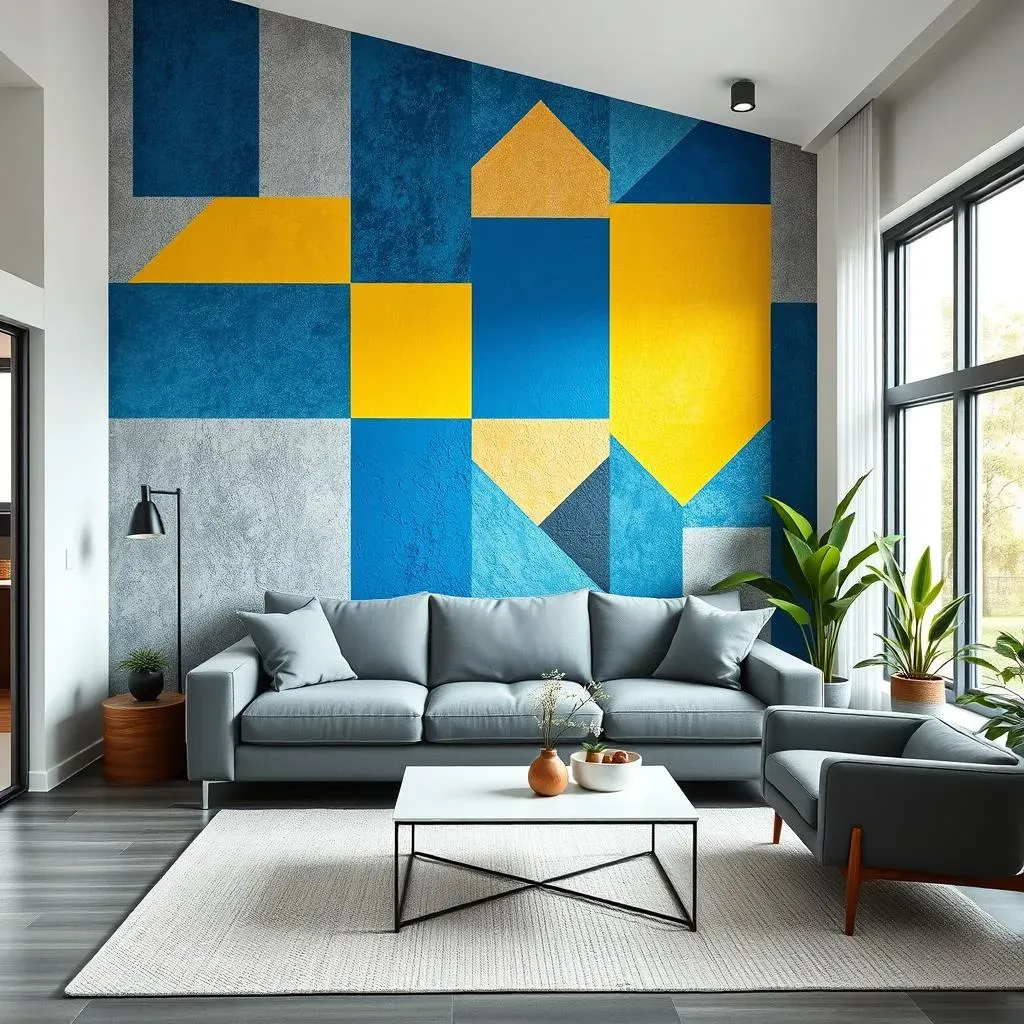Table of Contents
Ready to inject some serious personality into your home? Then get ready to explore the exciting world of modern accent wall ideas with bold colors! This article is your ultimate guide to transforming a blank wall into a stunning focal point. We'll dive into the art of selecting the perfect bold hue to complement your existing décor, whether it's a vibrant pop of color or a sophisticated, deep shade. We'll then explore a range of modern design styles, from geometric patterns and striking shapes to textured finishes and innovative materials. Think textured wallpaper mimicking natural stone, or a bold geometric mural that adds instant visual interest. We’ll show you how to seamlessly integrate bold colors into a modern space, offering practical tips and step-by-step guidance to make your DIY dreams a reality, even if you've never picked up a paintbrush before. Get ready to unleash your creativity and discover how a single accent wall can completely change the look and feel of a room. Let's turn that boring wall into a masterpiece!
Choosing the Right Bold Color for Your Modern Accent Wall
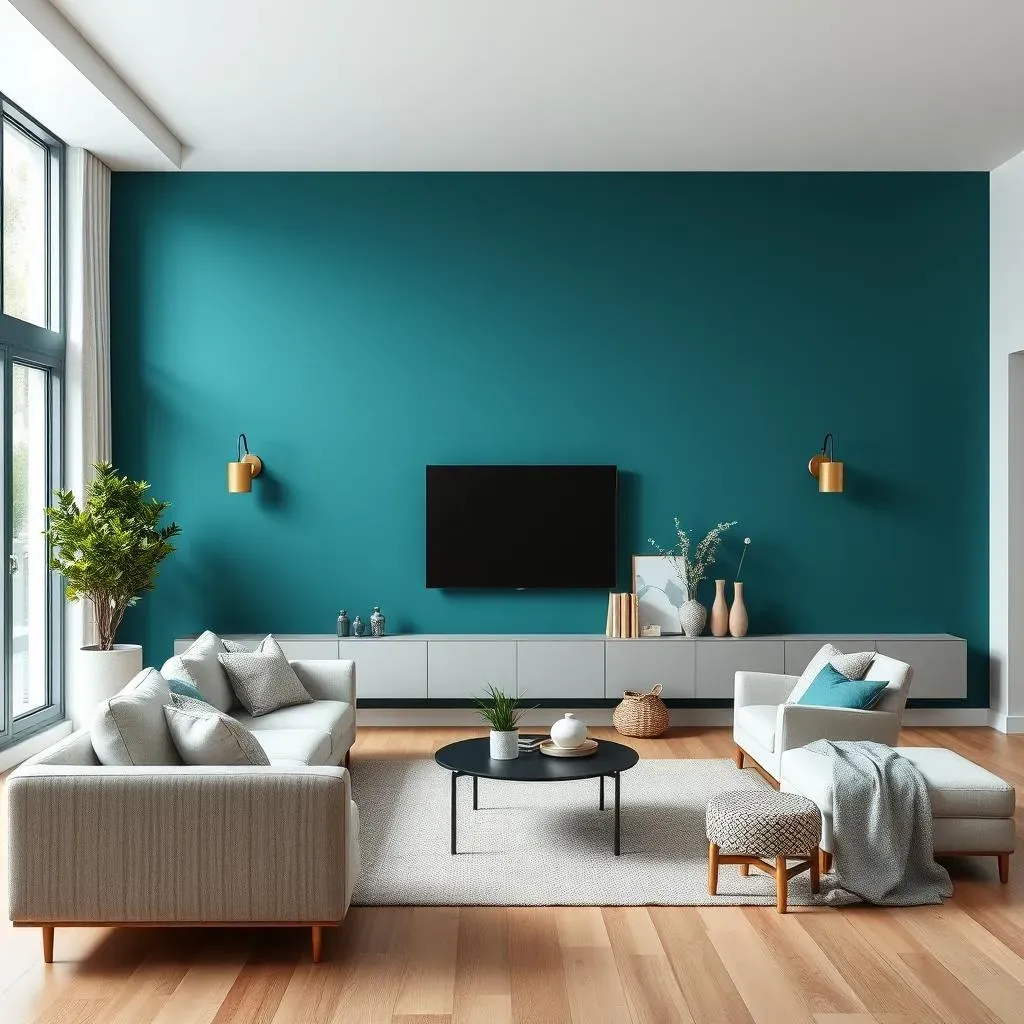
Choosing the Right Bold Color for Your Modern Accent Wall
Picking the perfect bold color for your modern accent wall is like choosing the perfect outfit – it needs to say something about you and work with what you already have. Don't just grab the first screaming shade that catches your eye! Consider your room's existing color palette. Are you working with neutrals? A deep teal or burnt orange could add warmth and depth. If your room already has some color, consider choosing a complementary shade or a tone-on-tone variation for a more sophisticated look. Think about the mood you want to create. Do you want something energizing and vibrant? Or something calming and serene? A bright yellow screams sunshine and happiness, while a deep navy blue evokes feelings of quiet sophistication. Remember, the goal is to create a focal point, not a clashing eyesore! Test your chosen color on a large piece of paper and place it on the wall in different lighting conditions to see how it looks throughout the day. Sometimes, what looks fantastic in the store might not translate as well in your living room.
Room Style | Suggested Bold Colors |
|---|---|
Minimalist | Deep Gray, Charcoal, Mustard Yellow |
Mid-Century Modern | Emerald Green, Burnt Orange, Teal |
Scandinavian | Navy Blue, Blush Pink, Terracotta |
Once you've narrowed down your choices, don't be afraid to experiment! Grab some paint swatches and tape them to your wall. Live with them for a day or two, observing how the light affects the color at different times of the day. Consider the size of your room, too. A small room might be overwhelmed by a very dark or intensely saturated color, while a large room can handle bolder choices. Ultimately, the best color is the one that makes *you* happy and complements your personal style. It’s your space, after all; make it reflect your personality!
- Consider the existing furniture and décor.
- Think about the mood you want to create.
- Test the color in different lighting conditions.
- Don't be afraid to experiment!
Modern Accent Wall Ideas with Bold Colors: Geometric Patterns and Shapes
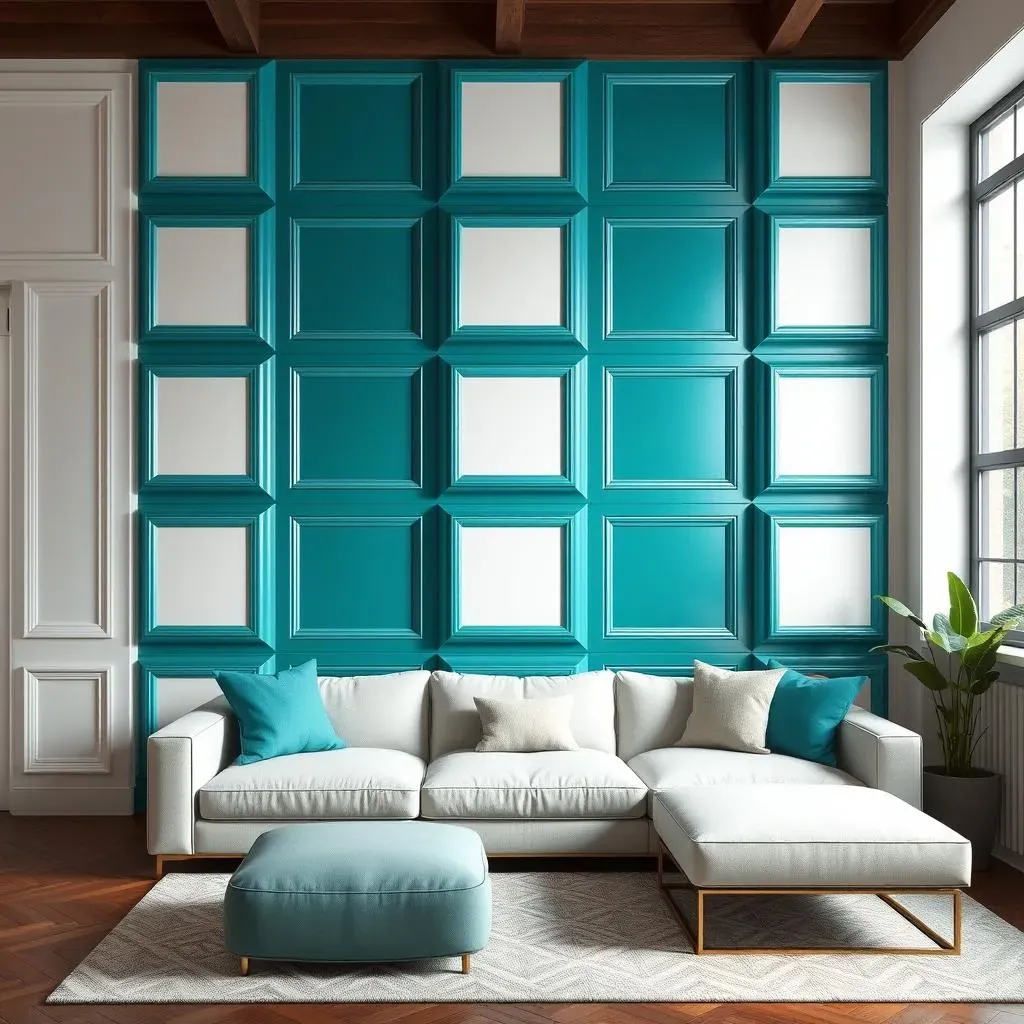
Modern Accent Wall Ideas with Bold Colors: Geometric Patterns and Shapes
Geometric Shapes: Bold and Simple
Geometric shapes are your secret weapon for a modern, impactful accent wall. Think bold stripes in contrasting colors, a series of stacked squares in varying shades of your chosen hue, or a striking chevron pattern that adds visual energy. The beauty of geometric shapes lies in their simplicity; they make a statement without being overwhelming. A simple grid of squares painted in alternating colors can transform a wall from drab to fab. Keep the shapes clean and crisp for a truly modern aesthetic. Consider using painter's tape for perfectly straight lines, or a stencil for more intricate designs. Don't be afraid to experiment with scale – large shapes create a dramatic effect, while smaller shapes offer a more subtle touch.
Shape | Effect | Color Combination Suggestion |
|---|---|---|
Stripes (vertical or horizontal) | Height or width emphasis | Navy and Cream, Mustard Yellow and Gray |
Squares/Rectangles | Clean, modern feel | Teal and White, Burnt Orange and Black |
Triangles | Dynamic, energetic feel | Pink and Purple, Green and Blue |
Adding Depth with Layering and Texture
Take your geometric accent wall to the next level by adding depth and texture. Instead of just painting, consider using textured wallpaper with a geometric pattern. Think raised designs, subtle embossing, or even a metallic finish to catch the light. You could also create a three-dimensional effect by using molding or trim to outline your shapes. This adds visual interest and a touch of architectural detail. For a truly unique look, try combining different materials. For instance, you could paint a geometric pattern on the wall and then add wood panels or metal accents within the shapes. Remember to maintain a cohesive color palette to avoid a chaotic look. The key is to layer your elements strategically to create a visually appealing and modern design.
- Use textured wallpaper for added depth.
- Incorporate molding or trim for architectural details.
- Combine different materials for a unique look (wood, metal, etc.).
- Maintain a cohesive color palette.
Beyond Paint: Exploring Alternative Materials
While paint is a classic and versatile option, don't limit yourself! Explore alternative materials to create your geometric accent wall. Consider using peel-and-stick wallpaper with a bold geometric pattern. This is a budget-friendly and renter-friendly option that allows for easy updates. Alternatively, you could use wood panels to create a geometric design. This adds warmth and texture to the space. For a more industrial feel, try using metal sheets or tiles. Remember to carefully plan your design beforehand, especially when using materials other than paint. Measure your wall space accurately and make sure you have enough materials to complete the project. No matter what material you choose, ensure it complements your overall design aesthetic and adds to the room's overall atmosphere.
Modern Accent Wall Ideas with Bold Colors: Textured Finishes and Materials
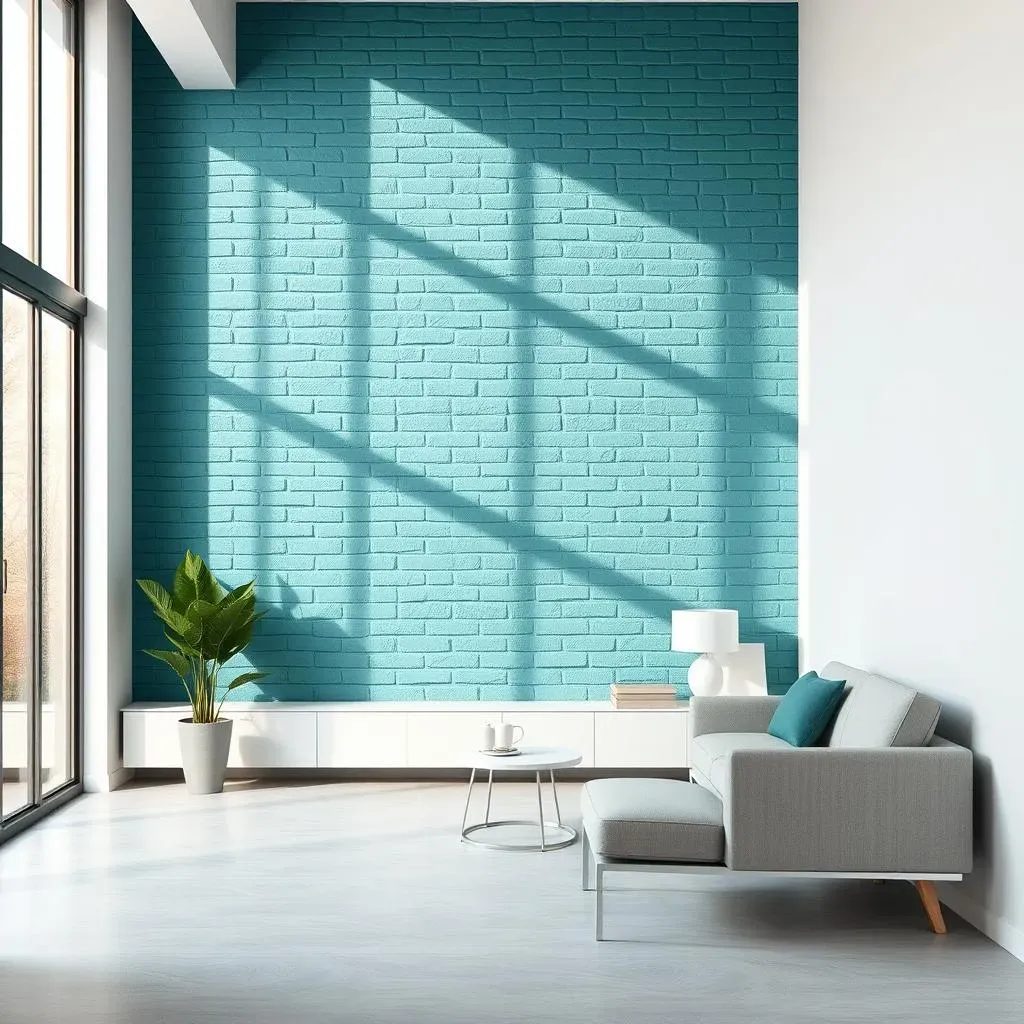
Modern Accent Wall Ideas with Bold Colors: Textured Finishes and Materials
Beyond Smooth Walls: Embracing Texture
Let's ditch the boring, flat wall and talk texture! Texture adds so much visual depth and interest to an accent wall, especially when you're working with bold colors. A smooth, painted wall can sometimes feel a little…blah. But introduce texture, and suddenly your accent wall becomes a dynamic, three-dimensional element in the room. Think of it like adding spices to a dish – a little bit of texture goes a long way in elevating the overall look. We're not just talking about paint anymore; we're talking about materials that add visual and tactile interest. This is where things get really fun!
Texture | Effect | Color Combination Suggestion |
|---|---|---|
Brick or Stone Veneer | Rustic, Industrial, or Earthy feel | Deep Red Brick with Charcoal Grout, Light Gray Stone with White Paint Accents |
Wood Paneling | Warmth, Natural feel | Dark Walnut Wood with Cream Paint, Light Oak with Teal Paint |
Textured Wallpaper | Variety of styles, from modern to traditional | Bold Geometric Pattern in Navy and Gold, Subtle Embossed Pattern in Deep Green |
Consider the overall style of your room when selecting your textured finish. A rustic, farmhouse-style room might pair well with exposed brick or wood paneling, while a modern, minimalist space might benefit from a sleek, textured wallpaper or even a 3D wall panel. Don't be afraid to experiment with different materials and techniques. You could even combine textures, such as pairing wood paneling with a textured wallpaper for a truly unique look. The possibilities are endless!
- Exposed Brick
- Wood Planks
- Textured Wallpaper
- 3D Wall Panels
Working with Bold Colors and Texture
The magic really happens when you combine bold colors with interesting textures. A deep teal painted on a textured brick wall creates a dramatic and sophisticated feel, while a bright yellow on wood paneling adds a cheerful, vibrant touch. Remember that the texture can actually influence how the color appears. A rough texture might make a color appear slightly darker or more muted, while a smooth surface will allow the color to shine brightly. Experiment with different combinations to find the perfect balance. For example, a bold color on a textured surface can create a visually stunning statement without being overwhelming.
Creating a Modern Accent Wall with Bold Colors: Tips and Techniques
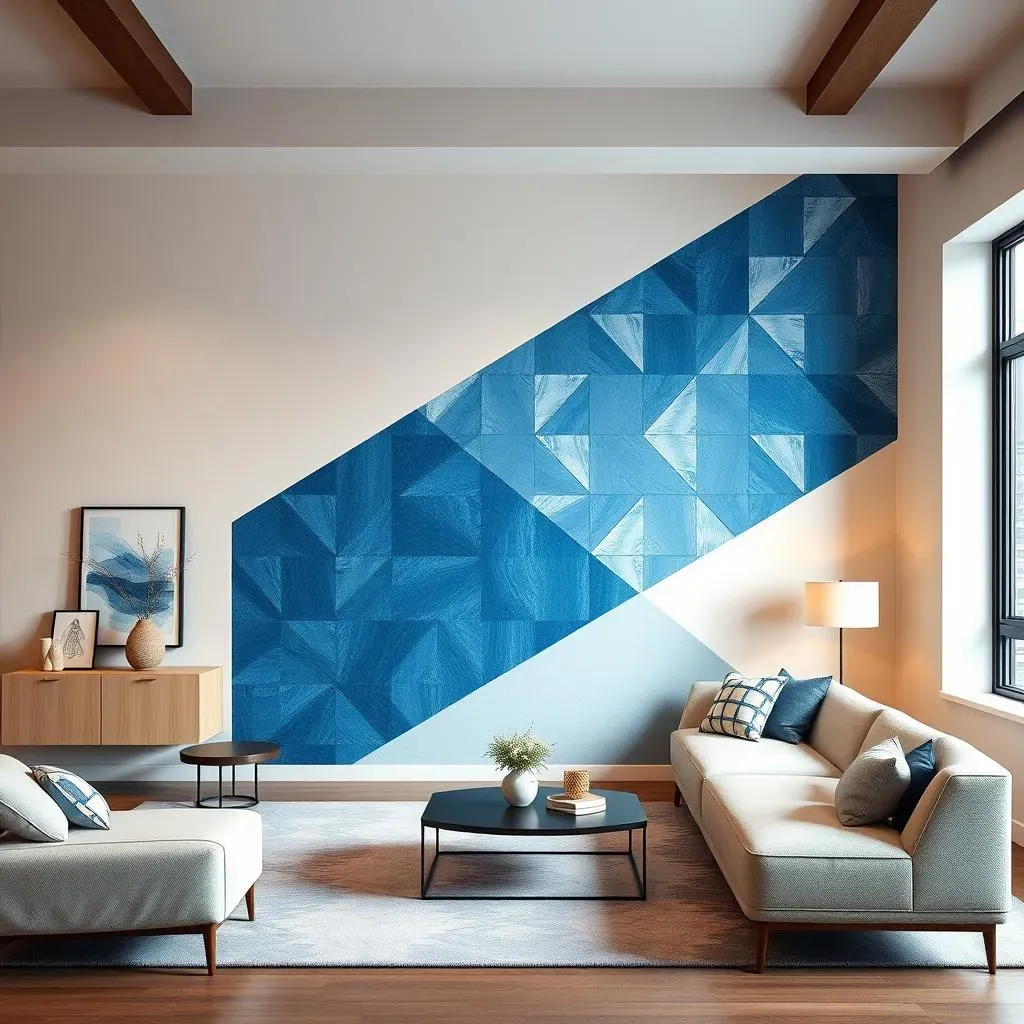
Creating a Modern Accent Wall with Bold Colors: Tips and Techniques
Planning and Preparation: The Foundation of Success
Before you even think about touching a paintbrush, meticulous planning is key! Measure your wall precisely—twice if you're feeling extra cautious. Sketch out your design, paying close attention to proportions and placement of any geometric patterns or textured elements. This prevents costly mistakes and ensures a professional finish. Consider the existing lighting in your room; a bold color might look different in natural light versus artificial light. Gathering all your materials beforehand saves you time and frustration later. Think paint, brushes, rollers, tape (if you're using patterns), drop cloths, and any other materials specific to your chosen texture (like wood panels or wallpaper). A well-organized workspace is a happy workspace!
Step | Action |
|---|---|
1 | Measure your wall accurately. |
2 | Sketch your design. |
3 | Gather all necessary materials. |
4 | Prepare your workspace. |
Execution and Finishing Touches: Bringing Your Vision to Life
With your plan in place, it's time to bring your vision to life! If you’re painting, apply a primer first for better color adhesion and to prevent the bold color from bleeding through. Work in sections, applying even coats and allowing each coat to dry completely before applying the next. Use painter's tape for crisp lines and edges if you're creating a geometric pattern. If using wallpaper or other materials, follow the manufacturer's instructions carefully. Take your time and don't rush the process; patience is key to a professional-looking finish. Once everything is dry, step back and admire your handiwork! Consider adding finishing touches, such as subtle lighting to highlight the texture or a few carefully chosen accessories that complement the bold color and design. The final touches are what truly elevates a good accent wall to a masterpiece.
- Apply primer for better color adhesion.
- Work in sections, applying even coats.
- Use painter's tape for crisp lines.
- Follow manufacturer's instructions carefully.
- Add finishing touches, such as lighting or accessories.
